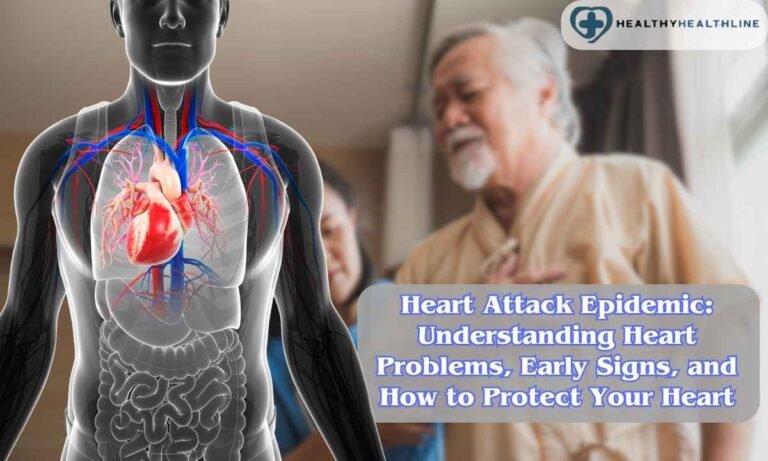Although heart attacks continue to rank among the world’s leading causes of death, the majority can be avoided. No matter your age, you can significantly lower your risk by learning about the heart’s functioning, identifying risk factors, and early warning indicators, and leading a healthy lifestyle. Concerns about well-being and maintaining one’s health to prevent such an unexpected death have grown as the number of heart attack cases among young people has climbed.
The Heart Attack Epidemic in India
Cardiovascular diseases are the nation’s largest cause of death, accounting for around 2.5 million deaths annually. Every year, 1.7 million people die from coronary artery disease (CAD), which is caused by artery blockages. Experts predict that by 2030, 4.77 million heart attacks will occur in India each year, underscoring the urgent need to treat heart-related illnesses.
Understanding the Heart
Understanding the Heart is essential before examining the causes and prevention strategies for heart attacks. The heart is a muscular organ that circulates blood throughout the body to supply oxygen and nutrients to the tissues. A heart attack, or myocardial infarction, happens when plaque builds up in the coronary arteries and interrupts the blood supply to a section of the heart. This blockage may cause damage or even death to the cardiac muscle tissue.
Causes of Heart Attack
When the heart’s blood supply is abruptly cut off, heart attacks result. Heart muscles may sustain damage and eventually die without this supply.
- Plague
Your blood vessels may not be blocked by tiny plaques in your arteries, but they may rupture or lose their outer covering. Blood clots may develop on these plaques as a result. Your coronary arteries may then become blocked by the blood clots. Women, smokers, and those with other blood vessel disorders are more likely to develop tiny plaques.
- Spasm
Even in the absence of plaque accumulation, a sudden and severe spasm (tightening) of your coronary artery might stop blood flow through it. One risk factor for a coronary spasm is smoking. Smokers may be more susceptible to spasms brought on by extremely cold or stressful circumstances.
- Coronary Artery Block
Doctors refer to it as a coronary artery embolism when a blood clot enters your circulation and becomes lodged in your coronary artery. This may obstruct your artery’s blood flow. People who have atrial fibrillation or illnesses like thrombocytopenia or pregnancy that increase the risk of blood clots are more likely to experience this.
Early Signs of a Heart Attack
One or more of the symptoms listed below could indicate that you are suffering a heart attack.
- The most typical symptom is chest pain, heaviness or discomfort in the middle or left side of the chest.
- One or both arms, your back, shoulders, neck, jaw or the area above your belly button may be painful or uncomfortable.
- Breathlessness while sleeping or engaging in mild physical exertion
- Sweating excessively without cause
- Feeling unreasonably exhausted, often for days at a time
- Nausea and vomiting
- Feeling lightheaded or experiencing abrupt dizziness
- An erratic or fast heartbeat
Tips to Prevent a Heart Attack
- Quit Smoking
One of the main risk factors for heart disease is smoking. It reduces blood oxygen levels and leads to plaque buildup in the arteries. According to research, giving up smoking can lower your chance of having a heart attack by about 36%.
- Eating Healthy
A Healthy Diet to Lower Your Risk by 18%. Consuming a diet high in fruits, vegetables, legumes, nuts, whole grains, low-fat dairy, and fish can cut your risk of heart disease and heart stroke by 18%. It’s also critical to limit trans fats, saturated fats, and too much sugar.
- Limit Alcohol
Excessive drinking can raise blood pressure and cause weight gain, both of which are bad for the heart. You can decrease your chance of having a heart attack by approximately 11% if you limit your alcohol consumption to less than two drinks per day for men and one drink per day for women.
- Manage Blood Pressure and Diabetes
If you have been diagnosed with high blood pressure, commonly known as hypertension, get frequent check-ups to control your blood pressure and ensure the disease remains under control. Keep a close eye on your blood sugar levels if you have diabetes.
You can also read about:


